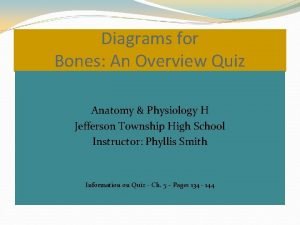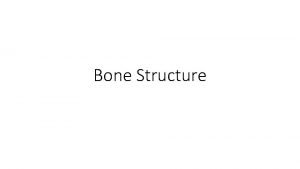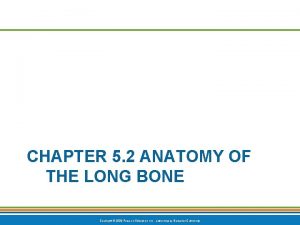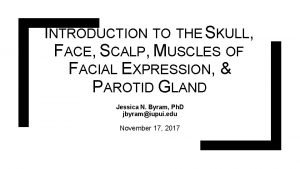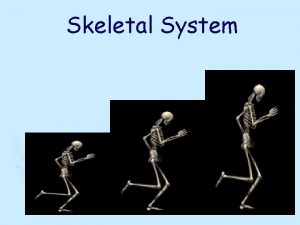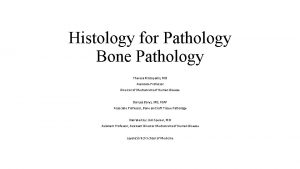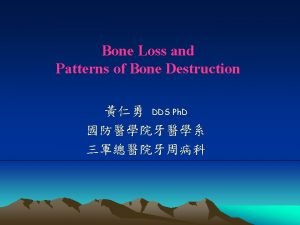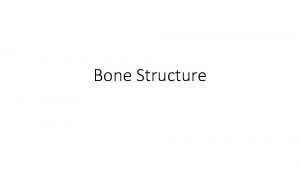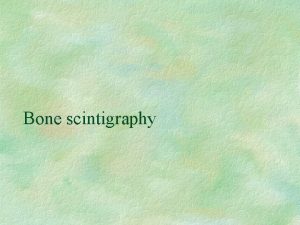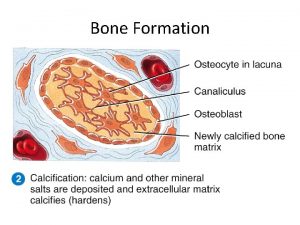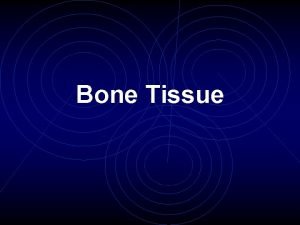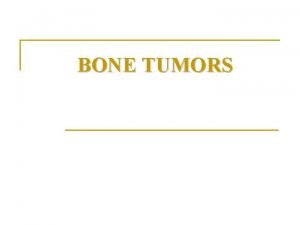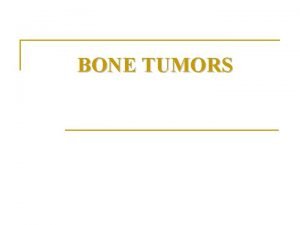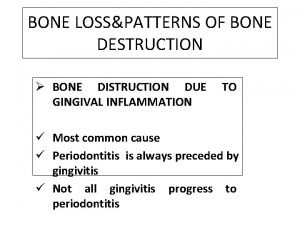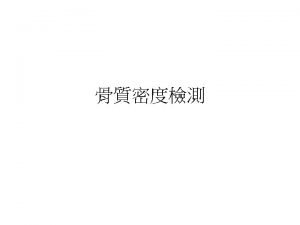Anatomy of the Long Bone About Bone t

Anatomy of the Long Bone

About Bone … t Composed of 50% water and 50% t t organic and inorganic material Elements include: phosphorous, zinc, calcium, magnesium, fluorine, iron, chlorine Resists compression and tension Bound by joints (through ligaments) Muscles attach to bone (through tendons) to produce movement ©Thompson Educational Publishing, Inc. 2003. All material is copyright protected. It is illegal to copy any of this material. This material may be used only in a course of study in which Exercise Science: An Introduction to Health and Physical Education (Temertzoglou/Challen) is the required textbook.

Physiology of Bones Bone consists of 2 types of connective tissue: 1. Bone – Composed of organic (living) material – mostly collagen. 2. Cartilage – No blood supply. - 3 months after fertilization, the skeleton is formed of cartilage. Gradually ossification replaces the cartilage with bone.

Bone Cells Osteocytes – bone cells Osteoblasts – bone-building cells Osteoclasts – bone-destroying cells

Bone Formation t Ossification (bone formation) takes two forms: v Compact bone (begins as cartilage): 4 Osteoblasts discharge osteoid into which minerals are deposited to form the hardened material recognized as bone v Cancellous bone (begins as fibrous membranes): 4 Osteoblasts release osteoid into membrane which forms a sponge-like bundle of fibers 4 Cancellous bone formation develops outward from these centers in the membrane ©Thompson Educational Publishing, Inc. 2003. All material is copyright protected. It is illegal to copy any of this material. This material may be used only in a course of study in which Exercise Science: An Introduction to Health and Physical Education (Temertzoglou/Challen) is the required textbook.

Ossification 1. 2. 3. 4. 5. 6. Development of cartilage Growth of cartilage Development of the primary ossification Development of medullary cavity Development of the secondary ossification Formation of articular cartilage and epiphyseal plates

Primary Ossification § mostly appears during fetal development, though a few short bones begin their primary ossification after birth. § They are responsible for the formation of the diaphyses of long bones, short bones and certain parts of irregular bones.

Secondary Ossification § occurs after birth, and forms the epiphyses of long bones and the extremities of irregular and flat bones. § The diaphyses and the epiphyses of long bones remain separated by a growing zone of cartilage (the metaphysis) until the child reaches skeletal maturity (18 to 25 years of age), whereupon the cartilage ossifies, fusing the two together (epiphyseal closure).

EPIPHYSEAL PLATES § growth plates – occur at various locations at the epiphyses of long bones EPIPHYSEAL LINES § epiphyseal plates have fused together http: //www. cptc. ctc. edu/library/Bio%20118%20 Lecture%20 Notes%20 Rev%200105_files/image 048. jpg

Bone Remodelling t has two main phases: v. Osteoclasts release acids and enzymes to remove old bone. These are bone destroying cells (resorption). v. Osteoblasts deposit new tissue. These are bone building cells. *Osteocytes are “bone cells” in mature bones. Bones CANNOT grow by cell division

Effects of Aging – Skeletal System t Remodeling declines from fourth decade onward v Process of bone remodeling reverses – resorption occurs v Results in a 5– 0% loss in bone mass per subsequent decade v Affects overall calcium levels in the body t Osteoporosis (low bone mass and deterioration of the bone tissue) may result from resorption v Leads to bone fragility v Increased susceptibility to bone fractures t Preventative measures include: v Balanced diet rich in calcium and vitamin D, and a healthy lifestyle v Weight-bearing exercises v Bone density testing and medication when appropriate
- Slides: 11
